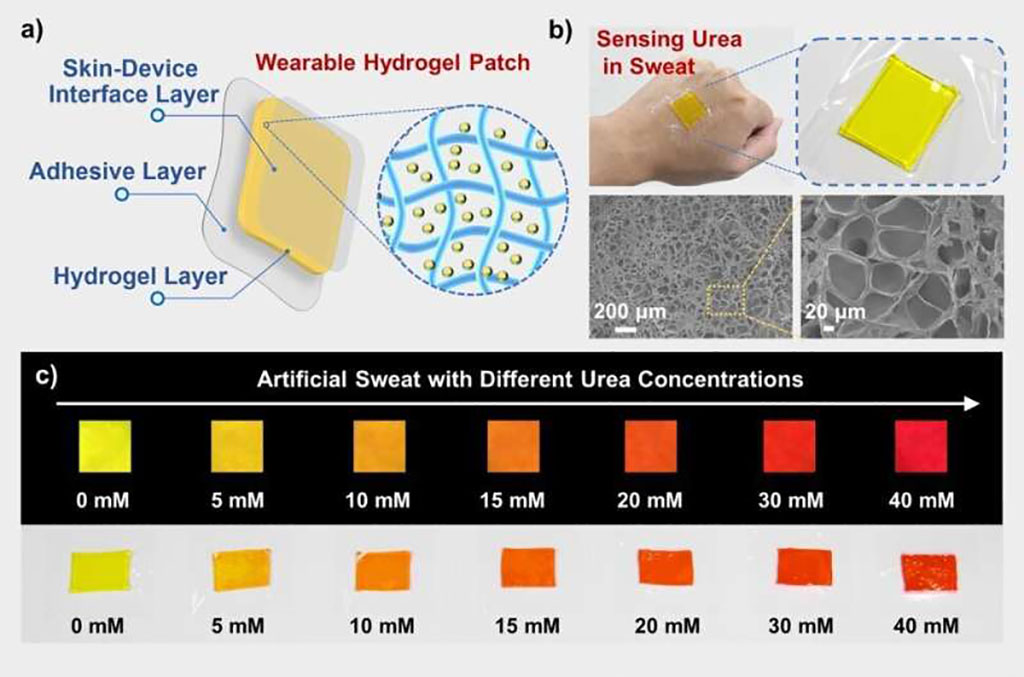Wearable Sensing Patch Enables Rapid Quantitative Analysis of Urea in Body Fluids
Posted on 25 Feb 2023
Urea, which is excreted in sweat, urine, saliva and blood, is a key indicator of renal function in clinical diagnosis. Effective determination of urea levels can enable early detection of diseases. There has been growing focus on wearable fluorescence-based sensors, although traditional fluorescent hydrogels are excited by short wavelengths, hampering the detection of biological samples. Now, researchers have developed a wearable sensing patch that enables the rapid quantitative analysis of urea.
Spontaneous and background fluorescence can interfere with the detection of biological samples. Upconversion nanoparticles (UCNPs), which can eliminate the self-fluorescence and background interference of biological samples, are an effective strategy for detecting human biomarkers with high sensitivity. Researchers from the Hefei Institutes of Physical Science (HFIPS) of the Chinese Academy of Sciences (Beijing, China) have developed a polyacrylamide (PAM) hydrogel sensor based on an upconversion optical probe, which was composed of UCNPs and p-dimethylamino-cinnamaldehyde (p-DMAC). As a result of the internal filtration effect, the red product produced by the reaction of urea and p-DMAC quenched the green fluorescence of the UCNPs and caused the upconversion fluorescence to change from yellow to red, thus realizing the fluorescence detection of urea.

Based on this, the researchers fabricated a flexible wearable sensor by combining PAM hydrogel and a portable sensor platform built using 3D printing technology. The researchers found the limits of detection of the self-designed upconversion fluorescent probe and the hydrogel sensor to be just 1.4 μM and 30 μM, respectively, which was much lower than the urea content in sweat, implying higher sensitivity. The sensor patch design paves the way for a convenient approach to accurately detect biomarkers in body fluids and for development into a device that could provide disease warning and clinical diagnosis, according to the researchers.
Related Links:
Chinese Academy of Sciences













